2013-04-04 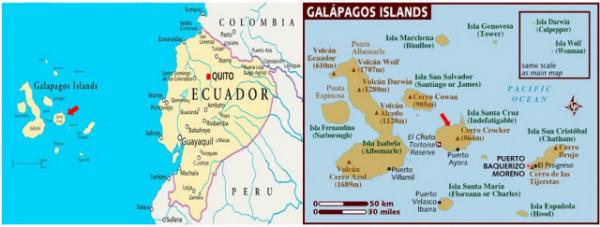
【Aiden in English】
Santa Cruz Island was the center of the Galapagos archipelago, where volcanic activity had long ceased. Among the few islands that people inhabited, it had the most significant human population. By 9:00 a.m., the sun was already steaming hot. We had just begun to walk along the northeast coast of Santa Cruz Island. There was a hideout where two US military barges from WWII broke their moorings and ran aground on the beach. The name "Las Bachas" is derived from the local population's mispronunciation of the word "barges" during the 1950s. By now, it was only wrecked with a few metal sticks offshore. Bachas Beach was a gorgeous white sand beach made of decomposed coral in crystal water. When we visited the Galapagos, it became one of the most significant nesting paradises for the Pacific Sea Turtles to lay their eggs at night in March-April. The tour guide asked us to be cautious and avoid the white poles, which marked the nests of the sea turtles. Marine Iguanas enjoyed bathing on the beach and even lay in the sun all day. They could stay underwater for up to 45 minutes while feeding on algae. They sneezed it out of their noses to expel the excess salt in their diet. The largest marine iguanas were found on Fernandina Island and could reach up to 4 feet/1.2 meters long. As we passed over some dunes, we were surprised to see a stand of flamingos. Four whitish pinks in their emblematic color were hopping from one foot to the other like a dance. Their long necks stretched into a large brackish lagoon where the water was mixed with fresh and sea salt. It was uncommon to meet the wild flamingos in such a big flock since there were only 400-600 flamingos spread over the entire Galapagos Islands. The only time they gathered was when they were mating and migrating. Fortunately enough for us, these beautiful birds seemed to have picked the perfect spot for our cameras. We returned to Bachas Beach for snorkeling. My first sight was a school of Rainbow Runners, zipping around faster than my head could turn. A variety of Parrotfish, Chameleon Wrasse, and Pacific Creole Fish followed them. Barber Fish swarmed rocks, and Giant Hawkfish hid behind boulders. What a wonderful morning! 【红霞译】
圣克鲁斯“十字架”岛是加拉帕戈斯“巨龟”群岛的中心,尽管很久以前火山活动就已经彻底消声匿迹,但可居岛屿依旧有限,按人口总数计算,圣克鲁斯岛在加拉帕戈斯群岛名列第一。 上午九点正,我们刚开始朝圣克鲁斯岛西北海岸方向挺进,太阳早已热气沸腾,两艘曾服役于二战的美军驳船在附近水域搁浅,其残骸零乱地躺在沙滩旁,上世纪五十年代仅会讲西班牙语的当地人因发不准英语中“驳船”两字而稀里糊涂地创造出这么一个非土非洋的生字,“巴查斯海滩”由此得名,并一直沿用至今。 巴查斯海滩非常漂亮,白沙细滩全部由珊瑚分解而来,海水“万顷深见底,清冰一片光照人”,正因如此,这里成为太平洋绿海龟筑巢产卵繁衍后代最受推崇的天堂之一。三、四月间我们来的时候,正好赶上绿海龟夜间生蛋孵化的季节,导游特意要求每位游客多加小心,千万不要越过插有白色标杆的地界,以防踩坏尚未出世的海龟宝仔。 海鬣蜥经常出没巴查斯海滩,甚至整天躺在沙滩上晒太阳,逮到合口味的海藻时,它们可以深入水中长达45分钟之久。为避免摄入过多的盐分,海鬣蜥靠打喷嚏将多余部分由鼻子排出体外,迄今为止加拉帕戈斯群岛最大的海鬣蜥约4英尺/1.2米长,产自费南迪纳“勇敢旅行者”岛。 我们走过沙丘,出乎意料地与四只火烈鸟不期而遇,白色羽毛透出娇艳的粉红色,两脚交替单立摆出舞蹈身姿,长长的脖子不时婉转伸入略带咸味的泻湖之中,尽管加拉帕戈斯群岛约有400─600只野生火烈鸟,但它们一般并不喜欢群居,除非交配或迁徙季节,大家才为了共同目标走到一起,我们运气不错,一下子捕捉到事先憧憬的摄影对象。
道别火烈鸟之后,我们又回到巴查斯海滩潜水,这时双带鰤大队鱼群从眼前穿梭而过,令我目不暇接;各种鹦哥鱼、变色龙鱼、太平洋蝴蝶鱼、理发师蝴蝶鱼紧随其后,围着海礁转来转去;巨鹰鲷则躲在岩石后面不肯出来,独享个“人”世界。我们触景生情,津津吟唱汉乐府古辞《江南》山寨版民谣:鱼戏岩礁间,鱼戏岩礁东,鱼戏岩礁西,鱼戏岩礁南,鱼戏岩礁北。 今早的日子多么美妙! Today in History(历史上的今天):
2013: N. Seymour, Ecuador(厄瓜多尔北黑暗岛) 2012: 忆淮滨(In Memory of Huaibin) 2011: 埃及教长湾—和平之城(Sharm El-Sheikh the City of Peace, Egypt) 2011: 埃及亚历山大—地中海明珠(Alexandria—Pearl of the Mediterranean, Egypt) 2009: 玩具(Toys) 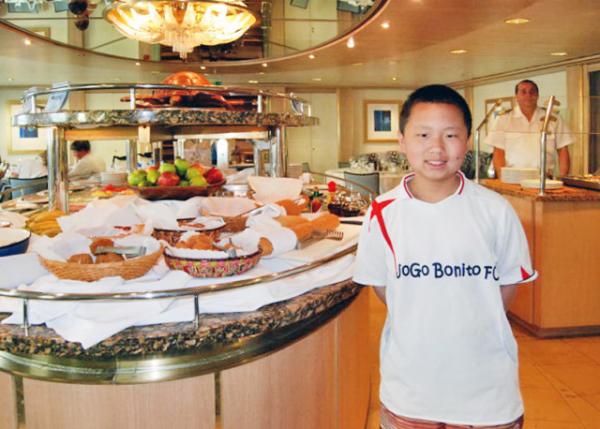 Breakfast @ Celebrity Xpedition Breakfast @ Celebrity Xpedition
(“名人·远征”号游轮——早餐 04-04-2013) 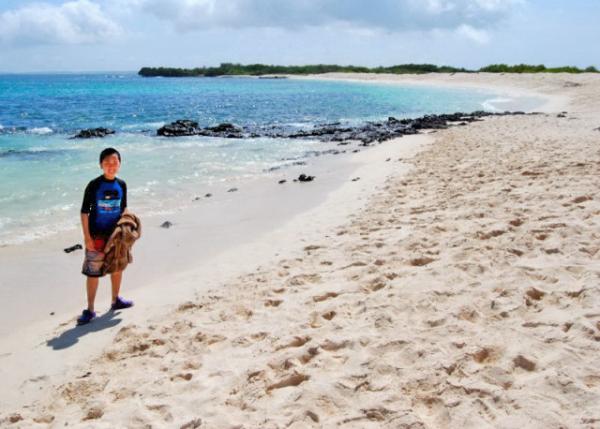 Bachas Beach, Featuring Pristine White Sand & Clear, Turquoise Waters Bachas Beach, Featuring Pristine White Sand & Clear, Turquoise Waters
(巴查斯海滩·拥有洁白纯净的沙滩和清澈碧绿的海水 04-04-2013)
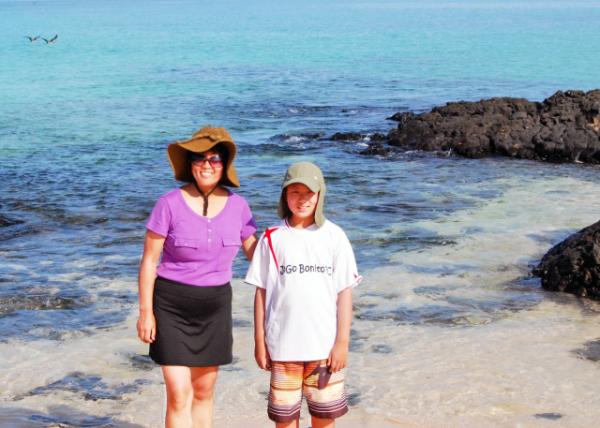 Strikingly Colorful Scenery w/ White Sand, Black Rocks, Turquoise Water, & Pink Flamingos Strikingly Colorful Scenery w/ White Sand, Black Rocks, Turquoise Water, & Pink Flamingos
(绚丽多彩的风景·白色沙滩、黑色岩石、碧绿海水和粉红色火烈鸟 04-04-2013) 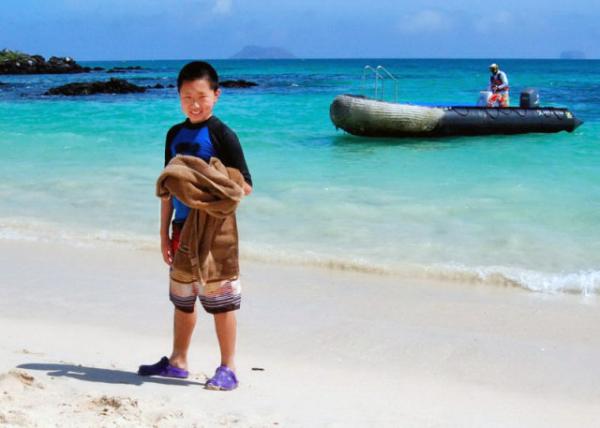 Ideal for Swimming & Snorkeling Ideal for Swimming & Snorkeling
(游泳和浮潜理想之地 04-04-2013) 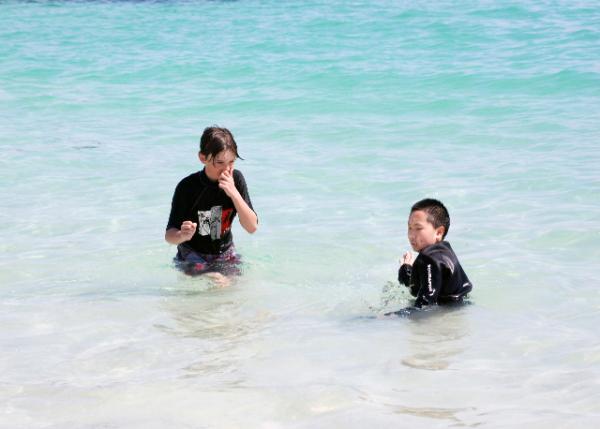 Snorkling w/ Buddy Xander Snorkling w/ Buddy Xander
(与伙伴山大“人类捍卫者”潜水 04-04-2013) 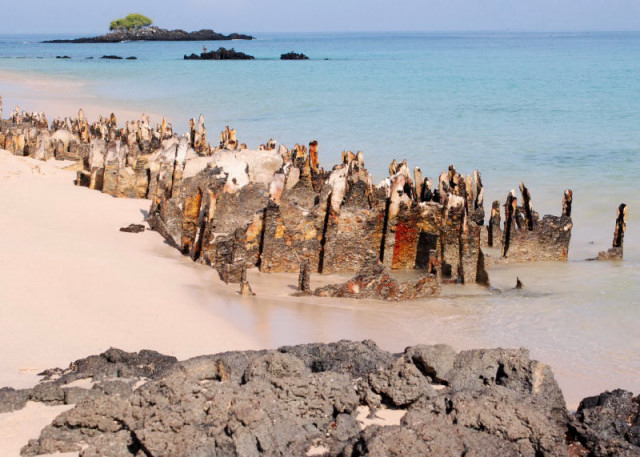
Wrecks of 2 US Barges (两艘美国驳船沉船)
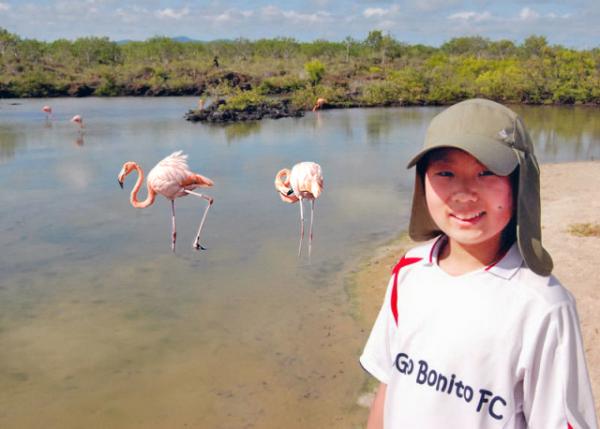 Brackish Lagoon, a Favorite Spot for Flamingos & the Only Time to Gather while Mating & Migrating Brackish Lagoon, a Favorite Spot for Flamingos & the Only Time to Gather while Mating & Migrating
(咸淡水礁湖·火烈鸟最喜欢的地方,唯有交配和迁徙时才聚众扎堆 04-04-2013) 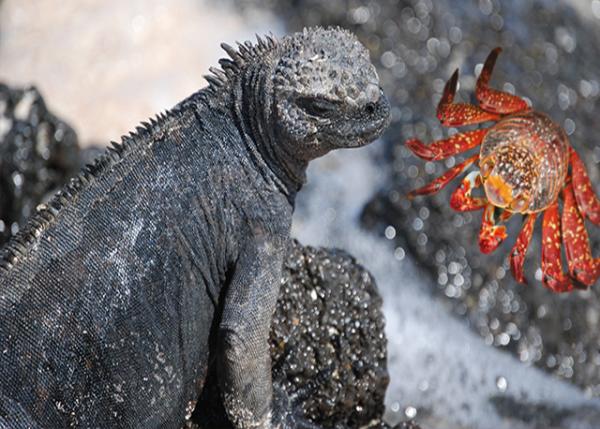 Marine Iguana & Sally Lightfoot Crabs, Featuring Unique Relationship w/ Marine Iguanas by Eating Parasites & Ticks off Their Skin Marine Iguana & Sally Lightfoot Crabs, Featuring Unique Relationship w/ Marine Iguanas by Eating Parasites & Ticks off Their Skin
(莎莉“公主”轻足蟹与海鬣蜥独特的共生关系·吃海鬣蜥皮肤上的寄生虫和蜱虫) 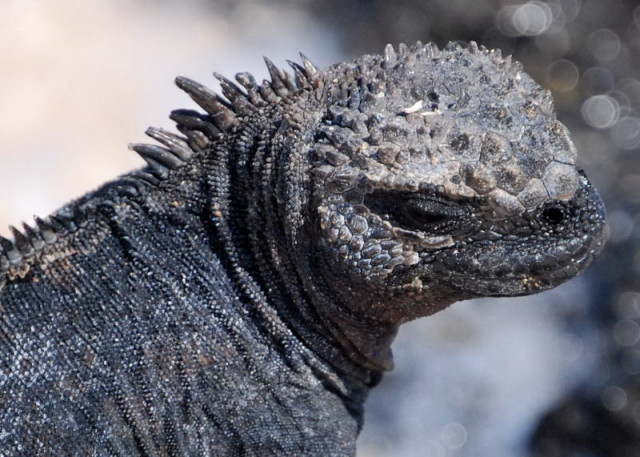
Marine Iguanas, the World's Only Lizard Species (海鬣蜥·世上唯一一种在海洋中觅食的蜥蜴) 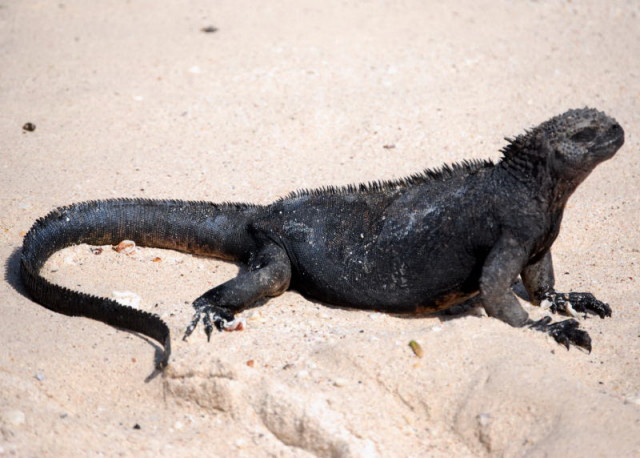
Marine Iguana Described by Charles Darwin in 1835 as a "Hideous Looking Creature, of a Dirty Black Colour, Stupid, and Sluggish" (海鬣蜥·1835年达尔文描述为“丑陋的生物,颜色肮脏、黑色,愚蠢而迟钝”) 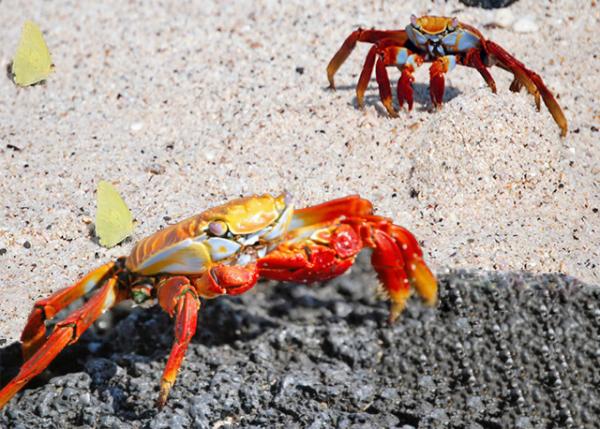 Ubiquitous Sally Lightfoot Crab & Butterfly Ubiquitous Sally Lightfoot Crab & Butterfly
(无处不在的莎莉轻足蟹与蝴蝶) 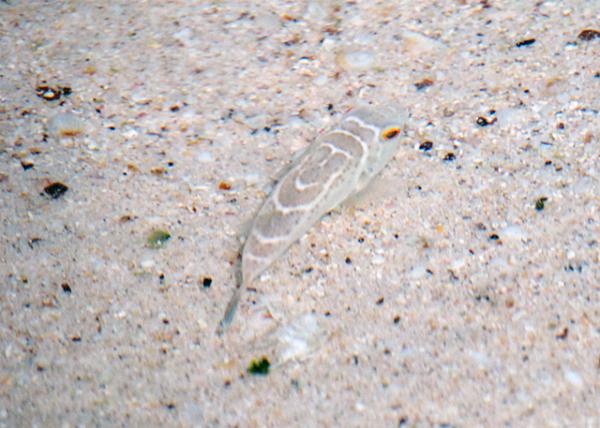 Marine Puffer Fish (海生河豚) Marine Puffer Fish (海生河豚)
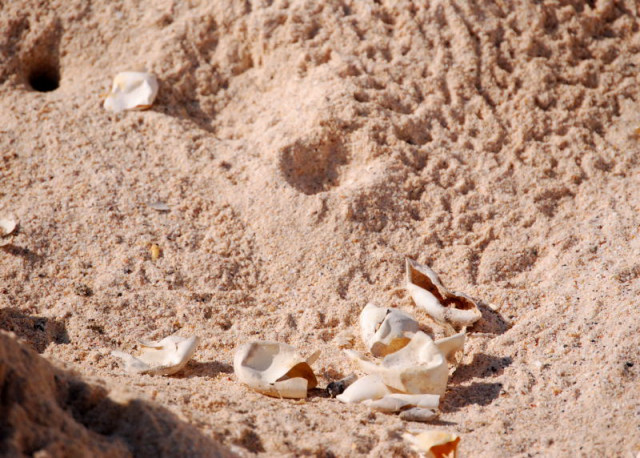
Green Sea Turtle Nests (孵化的绿海龟蛋皮与绿海龟窝) 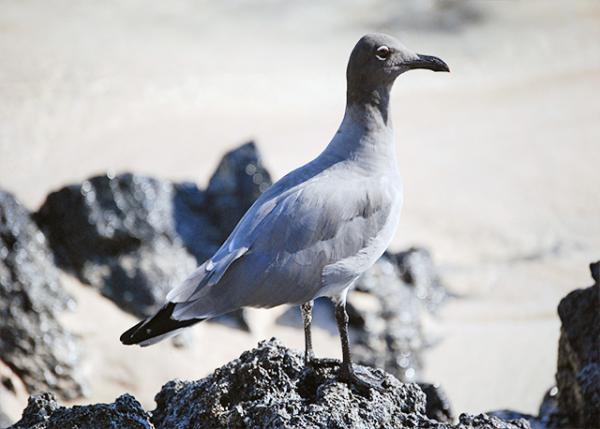 Lava Seagull, the Rarest Gull in the World Lava Seagull, the Rarest Gull in the World
(熔岩海鸥·世上最稀有的鸥类)
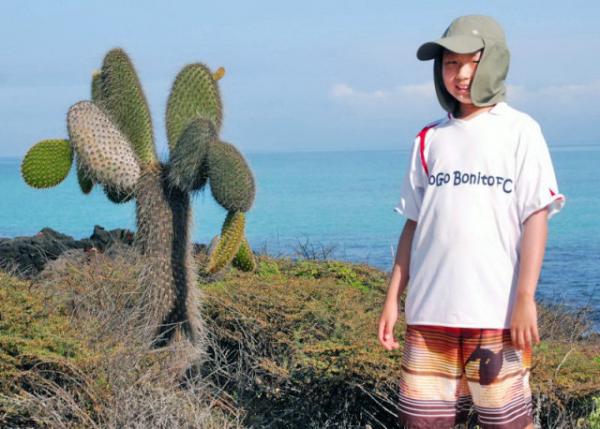 Galápagos Opuntia, an Example of Adaptive Radiation Galápagos Opuntia, an Example of Adaptive Radiation
(加拉帕戈斯仙人掌·适应性辐射的典范) 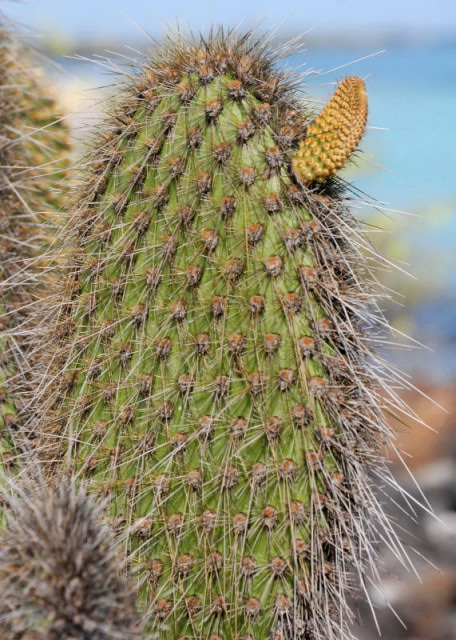
Opuntia Flowers (神仙掌花)
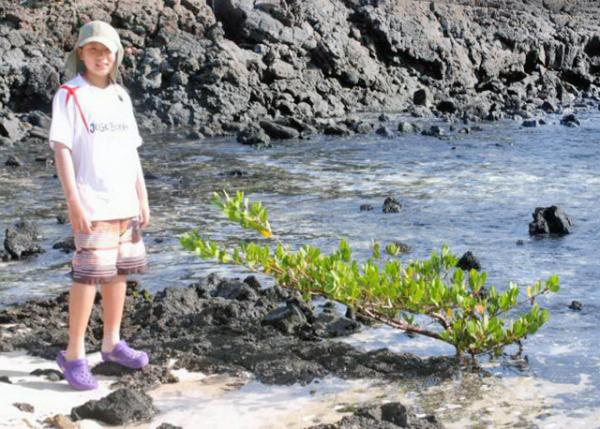 Mangrove (红树林 04-05-2013) Mangrove (红树林 04-05-2013)
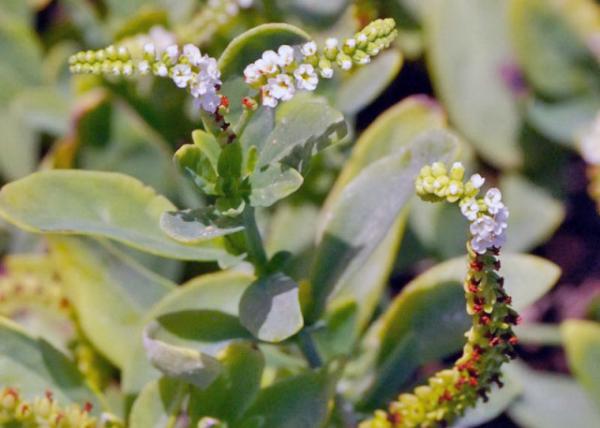 Mangrove in Blooming (盛开的红树林) Mangrove in Blooming (盛开的红树林)
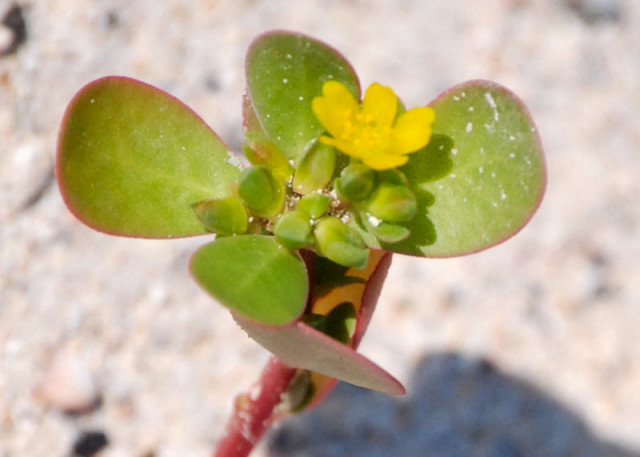
Galápagos Purslane, a Symbol of Resilience, Adaptability, & Enduring Life Force (加拉帕戈斯马齿苋·象征韧性、适应性和持久的生命力) Crosslinks(相关博文):
2013: San Critobal's Kicker Rock/Witch Hill(巨龟群岛睡狮岩女巫岭)
2013: San Cristobal's Frigatebird Hill(巨龟群岛克里斯托瓦尔岛·军舰鸟山) 2013: N.Seymour Is, Birdwatch in Galapagos(巨龟群岛北西摩岛·观鸟) 2013: Bartolome Is Pinnacled in Galapagos(巨龟群岛巴托洛梅岛·尖峰岩) 2013: Santiego's Sullivan Bay, Galapagos(巨龟群岛圣地亚哥岛·苏利文湾) 2013: Isabella Is, the Largest & Wildest(伊莎贝拉岛·巨龟群岛最大最野) 2013: Rabida Is w/ Red Beaches, Galapagos(巨龟群岛拉比达岛·红沙滩) 2013: Santiego's James Bay, Galapagos(巨龟群岛圣地亚哥岛·詹姆斯湾) 2013: Baltra & Daphine Is, Galapagos(巨龟群岛巴尔特拉岛和达芙妮岛) Ecuador(出游厄瓜多尔)
South America(漂流南美洲) 小学四年级(4th Grade) |
